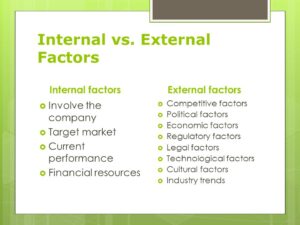When most people hear the term “marketing,” they immediately think of targeting clients with messages and content, but this is only one side of the concept. External marketing refers to the relationship between company and its clients whereas informing your employees about your brand identity is internal marketing. Even though brand identity and values should be expressed for both, internal and external marketing have very different goals. Whether you’re executing a comprehensive campaign technique to boost a new product or service or raising workplace awareness through identity reinforcement, your company may benefit from recognizing the importance of both types of marketing. The use of both marketing channels helps to strengthen the overall brand identity.
External Marketing:
The primary goal of external marketing is to increase revenue by acquiring new clients. This implies that your entire marketing strategy, including messaging, branding, and in-person contacts, is geared toward bringing in new clients. As a result, your external marketing will be more polished, presenting the reasons why prospects should choose your company over competitors. Because external marketing begins with cold leads that eventually warm up and convert, any external marketing materials must be attention-grabbing. Using everything from SEO techniques to social media marketing, you’ll pique patients’ interest and guide them through the sales funnel.
Internal Marketing:
Internal marketing will be very different from external marketing. Because, among other things, your target audience is made up of people with whom you already have relationships, your focus will be less on attracting attention and more on fostering your existing connections. Internal marketing’s primary goals differ significantly from those of external marketing. Instead of attempting to sell services, internal marketing aims to increase employee happiness and retention while enabling your team to do better at what they do.
The Difference between Internal and External Marketing
Even if your demographic suggests it, your tactics do not need to differentiate between internal and external marketing. Being proficient in various channels of communication offers significant benefits for your business and the clients you serve, even if they will likely assume different shapes and provide different outcomes.
Although you will most likely use the same platforms for internal and external marketing, your marketing strategy will be vastly different. For example, social media will continue to be important for internal marketing, but instead of attracting attention and interacting with potential clients, your goal will be to foster teamwork and educate your employees.

Another way your internal & external marketing will differ is in how you use incentives. Prospective clients are typically enticed with incentives including a low price, great service, and details about the advantages of braces. You could also hold social media contests with entertaining prizes. Internal incentives include promotions, employee of the month, and getting more paid time off.
When discussing internal vs. external marketing, one of two topics usually comes up. They start by contrasting how we sell to clients with how we can use the same strategies with our staff. Second, people discuss the benefits of using an internal marketing team rather than outsourcing marketing to a third-party firm. The size and goals of a company are important considerations in the internal vs. external marketing debate. To make the best decision, each company must consider what is most practical and cost-effective for its needs.
In terms of both overarching goals, your inbound marketing will most likely differ significantly from your external marketing. The news is fantastic. It implies that you don’t have to treat internal audiences any differently than you would treat customers or clients outside of the company. You may apply everything you know or have learned about external marketing to your workforce.
Conclusion:
A consistent internal marketing approach can help to unify a disjointed workforce. You can strengthen any existing sense of community among your employees through your marketing initiatives. Don’t forget to consider your employees’ needs. External marketing’s primary goals are to meet consumer demands and to foster a relationship between them and your company. Keep this approach in mind as you develop your internal marketing goals and plan. Pay attention to what your staffs and assist them with their ideas if the are beneficial. To connect with your employees, use integrated marketing communication.
[…] Source: Internal Vs External Marketing-Everything you need to know – SEO Kochi […]